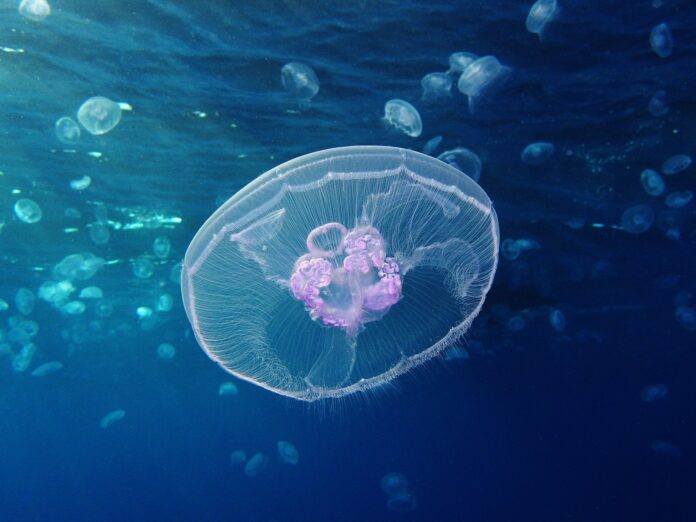Cnidarians are well known for their “stinging cells” called cnidocytes
By KATELYN BURNS— science@theaggie.org
Cnidocytes are known as the “stinging cells” of Cnidarians, consisting of jellyfish, sea anemones and corals. If you have ever been stung by a jellyfish, that was a cnidocyte. All Cnidarians have cnidocytes, and these cells are incredibly complex.
“Although cnidocytes are best known for ensnaring and/or envenomating prey, they come in a variety of forms with distinct functions,” a study published in the Evolution & Development journal reads. “This includes substrate attachment, construction of tube-dwellings, self-defense/intraspecific competition, and mating.”
David Gold is an associate professor in the UC Davis Department of Earth and Planetary Sciences with a lab specializing in animal geobiology, and his research focuses on using jellyfish as model organisms.
“[Jellyfish have] this capsule made out of a kind of collagen protein that we don’t find in any other group, then within that there’s a really pressurized structure with a harpoon and a thread within the harpoon,” Gold said.
These harpoons create the sticky feeling that comes from touching sea anemones. Gold further discussed the complex nature of the cnidocytes found within Cnidarians.
“There’s also typically really complex venoms in the cells,” Gold said. “The venoms are evolving extremely fast as each group specializes to different prey; There are venoms and counter-venoms.”
When you think of jellyfish, you might think of just the free-floating, reproductive stage found in various species called a medusa. However, not every jellyfish has a medusa stage. Hydra, a type of jellyfish, actually have no medusa stage and exist only in the polyp stage, where they remain attached to a surface.
Jasmine Mah, a postdoctoral scholar in the Juliano Lab studying Hydra, commented on the origins of cnidocytes.
“The first cnidocyte to evolve in Cnidaria was probably one called the isorhiza cnidocyte, the simplest type of cnidocyte,” Mah said. “It is hypothesized that the very first Cnidarians may have used these isorhiza cnidocytes to fight off competitors, adhere to the ground and maybe capture prey.”
The fossil record of jellyfish is heavily debated due to lack of definitive fossils, from jellyfish being soft-bodied. However, when combined with genetic data, researchers have been able to get a better understanding about the history of jellyfish.
As the temperature of the climate has increased, so has the temperature of the water. Nutrients from farming and agriculture have been pumped into the ocean, and as a result, blooms of bacteria have resulted in low oxygen levels that create more dead zones — an area of the ocean without oxygen levels high enough to sustain marine life. Where other animals have failed, jellyfish have thrived in these environments, and there can be hundreds of thousands of jellyfish in one area.
Gold commented on the impact that jellyfish have on the ecosystem in these environments.
“They can cause all kinds of ecological havoc,” Gold said. “They eat larvae of other animals, making it harder for other animals to get reestablished […] and they clog up power plants.”
Tracing the evolution of cnidocytes, the focus of the study in the Evolution & Development journal can help us better understand the role of Cnidarians in oceans over time. More information on the study’s details can be found in the research article online.
Written by: Katelyn Burns— science@theaggie.org





